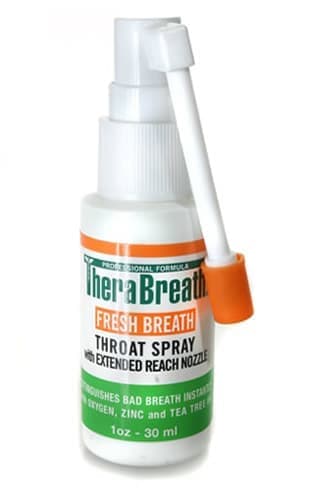
A Comprehensive Guide to Bad Breath: From Symptoms to Prevention.
Introduction
The objective of the guide is to provide general information that helps in understanding bad breath: from its symptoms through treatment options, home remedies and prevention.
Table of Contents
- What is Bad Breath?
- Bad Breath Causes
- Symptoms of Bad Breath
- Bad Breath Diagnosis
- Bad Breath Treatment
- Bad Breath Home Remedies
- Easy Ways to Prevent Bad Breath
- Summary
1. What is Bad Breath?
Halitosis, or bad breath, is a medical condition potentially caused by a number of underlying factors and diseases such as cancer, diabetes and respiratory tract infections. Bad breath, an unpleasant odor coming from the mouth, is an embarrassing health condition that affects more than 90 million people worldwide. The American Dental Association states that up to 25% of Americans experience bad breath on a regular basis.
2. Bad Breath Causes
Halitosis is the result of a build-up in odor-producing bacteria and food particles in the mouth. This density vaires during the day. Certain foods and health conditions may worsen bad breath. Bad breath can also result from poor dental health habits. There are millions of filaments on the tongue that trap food particles, causing odor. That is why brushing your teeth, and even tongue, is so important. Most chewing gums and mints only mask bad odor.
As a condition, bad breath can be made worse by certain foods such as onions, garlic, cheese, meat, fish and coffee. Chewing tobacco-based products or smoking affects oral hygiene and causes bad breath. Poor dental hygiene leads to gum disease which may also cause halitosis. When bacteria form on the teeth and gums, it causes gingivitis, tooth decay and periodontitis. Individuals who suffer from diabetes, lung disease or kidney disease often experience chronic bad breath. Respiratory tract infections are among factors responsible for this condition of halitosis. Certain drugs can cause bad breath as well.
Most people experience bad breath in the morning because the mouth becomes dry and the flow of saliva decreases. This process is perfectly normal and does not indicate any serious health condition. Individuals who have problems with their salivary glands or take certain medications for treating high blood pressure or urinary problems are often diagnosed with chronic dry mouth. Bad breath also affects people suffering from kidney or liver failure, metabolic disorders and cancer.
Fruity breath usually indicates diabetes. Renal infections, carcinoma and metabolic dysfunction may cause foul breath odor. Herpes simplex and HPV can trigger halitosis as well. According to studies, in approximately 10% of all cases, bad breath is caused by certain illnesses. Sinusitis, pneumonia, bronchitis and polyps affect the airways and cause halitosis.
Other common factors responsible for bad breath include nasal odor and putrefaction from the tonsils. Dental caries, yeast infections of the mouth and gum disease are some of the main dental causes of halitosis. Bad breath is often triggered by malformations of the oral-nasal cavity or foreign bodies lodged in a nostril. A partially erupted wisdom tooth can cause bad breath. Because halitosis can indicate a more serious problem, it is important to visit the doctor if bad breath persists.
3. Symptoms of Bad Breath
Bad breath is a condition that lowers self-esteem and affects everyday life and personal relationships. People with chronic or recurring bad breath often lose their self confidence. It can be difficult to know if you have this problem. Family members and colleagues may not tell you. One of the best ways to find out if you have bad breath is to lick the inside of your wrist, wait five seconds and then smell. You may also use a Halimeter to measure the concentration of sulfides in the mouth.
Most symptoms depend on the underlying cause of halitosis. Individuals who suffer from bad breath because of dry mouth experience difficulty speaking, difficulty swallowing, a burning sensation in the mouth and dry eyes. Fever, sore throat, persistent cough and swollen lymph nodes in the neck indicate respiratory tract infections. If bad breath is accompanied by open sores on the tongue, red gums and loose teeth, then you might have an infection in the mouth. The most common symptoms of bad breath include post-nasal drip, bitter metallic taste, a white coating on the tongue and thick saliva.
Odor from the nose is usually a sign of dryness, polyps or sinusitis. When the odor appears upon talking, it often indicates post-nasal drip on the back of the tongue. A bad taste all day long is a sign of excessive bacterial activity on the tongue. Sometimes breath odor is accompanied by cold-like symptoms, vomiting, sore throat, lung inflammation, nasal polyps, rapid heartbeat or bloody sputum. Each of these symptoms may indicate certain diseases and illnesses such as periodontitis, acute bronchitis, or cystic fibrosis. The "rotten egg" smell usually indicates cirrhosis of the liver, while a sweet or fruity odor is a clear sign of diabetes. An ammonia-like odor indicates the patient may suffer from kidney failure.
4. Bad Breath Diagnosis
Dentists and health care professionals use several methods to diagnose halitosis. Gas chromography allows the dentist to measure halitosis gases from the mouth and throat. If you present high concentrations of a particular gas, the doctor will determine what part of your mouth the bacteria are living in. He will also look at your tongue to see if the coating is more than 12 hours old. If the doctor suspects diabetes, liver disease or lung infections, he will order diagnostic tests and examine your salivary glands, teeth, and gums. He will ask you a few questions about your diet and dental hygiene.
Some specialists use a flexible camera to inspect the nasal cavity, pharynx and throat. Diagnosing halitosis may also require x-rays and periodontal charting. It is recommended that you go to the dentist if you have bad breath with loose teeth or painful gums that bleed easily. During the examination, the doctor will determine if there are any untreated diseases or dental problems responsible for bad breath.

5. Bad Breath Treatment
In most cases bad breath can be successfully treated. If the dentist determines that the odor is not of oral origin, he will send you to a specialist for further testing. He will also clean the areas where plaque is caught between your teeth.
Bad breath treatment depends on its cause. In general, the doctor will recommend certain mouthwashes and toothpastes to treat bad breath and neutralize volatile sulfur compounds. The most common treatment options include antibacterial mouthwashes, antiseptic mouthwashes and cetlyperadium chloride mouthwashes. Studies have shown that mouthwash products that contain chlorine dioxide, sodium chlorite or zinc neutralize volatile sulfur compounds and help control bacteria found in the mouth. If the patient is experiencing dryness in the mouth, the doctor will recommend a saliva substitute.
Halitosis takes several forms. Depending on what type of halitosis you suffer from, the dentist will recommend a treatment scheme. Genuine halitosis can be detected by organoleptic testing. A patient who suffers from pseudo-halitosis feels that he has bad breath although the doctor doesn’t find any real breath problem. Individuals diagnosed with halitophobia feel that they still have breath problems despite the fact that they have been successfully treated for halitosis. In this situation, the doctor will recommend psychological counseling.
6. Bad Breath Home Remedies
The use of simple self-care techniques can often minimize this problem.
There are several things one can do in order to get rid of bad breath. Ask the dentist to recommend a toothbrush for your tongue and a mouthwash that has been shown to be effective in fighting bad breath. Go to a dental professional to have your teeth cleaned on a regular basis.
Reducing the food supply available to the bacteria that cause bad breath is one of the most effective ways to reverse halitosis. Brushing and flossing your teeth help remove plaque and kills bacteria. To stimulate the salivary flow, chew gum, lozenges, fennel seeds or mints. Rinsing the mouth with lemon juice diluted with water is one of the most popular home remedies for bad breath. Researchers have shown eating yogurt for six weeks can reduce bacteria found in the mouth by 80%.
One of the best ways to remove bacteria in the mouth is to eat an apple a day. Chewing sunflower seeds and then drinking a glass of water will help get rid of breath problems. Create your own gargle by mixing extracts of sage, myrrh gum and calendula. Brush your tongue and gums with powdered cloves or myrrh. Eat pineapple, kiwi and papaya. These fruits contain digestive enzymes, which improve digestion and reduce bad breath odor.
If the problem persists, take a dietary supplement. Vitamin B deficiency often causes halitosis. Brushing your teeth with baking soda and toothpaste helps neutralize any excess acids found in the oral cavity. Other popular remedies for bad breath include spirulina, tea tree oil, sage, peppermint, basil, charcoal and alfalfa.
7. Easy Ways to Prevent Bad Breath
Preventing bad breath is easier than treating it. Eat quality, easy to digest food and use oral health products that help prevent halitosis. Avoid eating cookies, cakes, sweets, ice cream and other foods that contain refined carbohydrates. Consume fresh fruits and vegetables to remove intestinal decomposition. These foods help remove plaque, increase saliva flow and inhibit growth of anaerobic bacteria. Using mouthwashes can help you prevent breath problems. Some mouthwash products alleviate existing bad breath, while others remove odor and stop the germs responsible for bad breath.
Green and black teas contain polyphenols that help attack sulfur compounds and reduce oral bacteria. If you want to prevent bad breath, avoid taking antidepressants, diuretics, pain relievers and antihistamines. These drugs inhibit saliva flow and cause halitosis. Use oral hygiene products that do not contain sodium lauryl sulfate or alcohol.
Practice good oral hygiene to prevent and reduce bad breath. More than that, smoking is associated with decreased moisture in the mouth.
To prevent dry mouth, breathe through your nose instead of your mouth and keep your mouth moist by drinking plenty of water.
Using dental floss regularly and removing dentures at night are some of the best ways to prevent and fight halitosis. If you do have dentures, clean them at least once a day.
Adding a few carbohydrates to your diet may help you reduce bad breath.
Clean your mouth after eating meat, fish and dairy products.
Eat foods rich in fiber.
If you believe you are lactose intolerant, cut out all dairy products from your diet.
8. Summary
Bad breath is rarely caused by life-threatening diseases. However, it is important that you consult a physician as soon as you notice white spots on the tonsils, sores in the mouth or fever. Sometimes bad breath is triggered by severe health problems such as throat or mouth cancers, human immunodeficiency virus (HIV) infection, digestive system disorders or diabetes. Halitosis can also indicate dehydration or zinc deficiency. Taking proper care of your teeth and visiting the dentist at least twice a year are the easiest ways to avoid breath problems.
